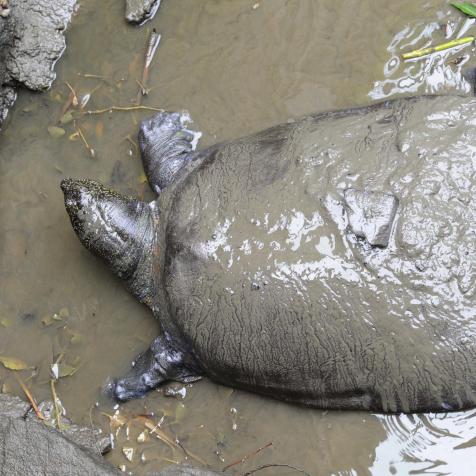
GettyImages/M Swiet Productions
Working Together to Save Hawaii's Turtles
Some of Hawaii’s tourism operators, hotel and scientists are using the visitors as an opportunity to help with the turtle revival.
Mālama Honua is a Hawaiian phrase meaning to take care of the “Island Earth”. However, a loss and degradation of coastal and ocean habitats, such as coral reefs and beaches, has resulted in the aquamarine oceans that envelop the archipelago being in a less-than-healthy state. Thanks to rising temperatures and more acidic waters, the ocean, which is integral to Hawaii’s way of life, has suffered.
In spite of this, Hawaii’s turtle population is thriving and bucking a worldwide trend.
Photos
See All PhotosAll green turtle populations in the 140-plus countries that they can be found in are listed as either endangered or threatened—except in Hawaii, where this particular species of turtle is on the up. The indigenous species plays an important role in mo’olelo - cultural traditions and stories - with some families revering sea turtles as spiritual guardians.

The population of green turtles has been increasing in the US state by around 5% every year for the past two decades, and in some cases by as much as 8%. There are now almost 800 females nesting annually, compared to 35 of them in 1973.
In 1978, the turtles were placed on the Endangered Species Act. The reptiles’ decline in numbers was caused by fishing, pollution, illegal hunting, and development along the coast.
Tourism’s impact on Hawaii’s turtles is a serious issue on the islands. Last year, a tourist was fined $1,500 for harassing a turtle. Nearly 6 million tourists visited Oahu island last year, and the pressure of so many added individuals inevitably takes its toll on marine life. An increase of plastic litter on beaches, more hotel developments along the coast to cater to visitors, and more pollution in the waters from visiting cruise ships are just some of the consequences.
But some tourism operators, hotels, and scientists are using the visitors as an opportunity to help with the turtle revival. Tagging, satellite tracking, and time-depth recorders are all techniques employed by the National Oceanic and Atmospheric Administration (NOAA), which has strived to engage and involve the public in saving Hawaii’s green turtles - honu in Hawaiian.
For the past two years, NOAA biologists have been leaning on “citizen scientists” to help report turtle encounters, in order to track foraging habitats, migration, and distribution. Scientists etch a temporary number, which lasts for about a year, on turtles’ shells at the beginning of their summer field surveys. This makes it easy to identify turtles and means the public can help efforts by sending in the number and location of turtles.
Hawaii’s Hualālai Resort has an ongoing turtle tagging program aiding biologists in their efforts to monitor populations, as well as running educational outreach courses offering student mentoring and assisting local teachers. The resort has even created a marine life code of conduct for visitors and a health monitoring analysis every few months to track its own impacts on the environment.
Agencies, such as Wild Side Specialty Tours, based in Oahu, has turned its wildlife watching excursions into an opportunity for education and conservation. The company’s marine biologist crew accompanies tourists on snorkeling trips to ensure safe encounters with the creatures. Adventurers are taken out along the west Oahu coast and into the areas where turtles are known to frequent.
“We teach people how to respectfully swim with turtles,” says April, one of the boat’s crew members. “There are a couple of signs to watch out for when you get too close to a sea turtle. Yawning, open mouth movements or head bobbing are both clues. Also, you should never interrupt a turtle’s ascent to the surface. They might be able to stay underwater for hours at a time, but when they come up for air, it’s important they do so in a relaxed environment.”
Some tourists still flout the rules and get too close, attempting to touch the turtles. But, April says, it proves how vital the education process is.
Swimming alongside these majestic, graceful, creatures is a humbling reminder of the fragility of the planet, and the devastating impact of humans. Making eye contact with a turtle, watching it elegantly propel itself to the surface to catch its breath before descending again to the sandy seabed, and then swim alongside a glistening web of plastic floating aimlessly underwater is a powerful prompt that conservation work - no matter how small - is more important than ever.


















.jpg.rend.hgtvcom.476.476.suffix/1633031314945.jpeg)


